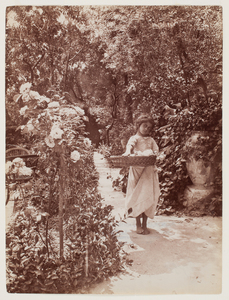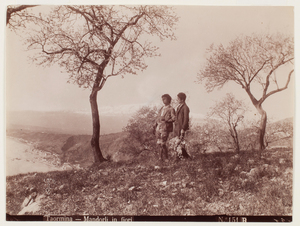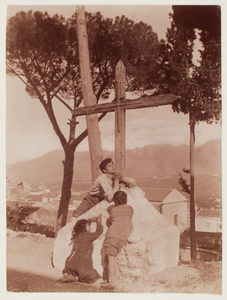Baron Wilhelm von Gloeden was born near Wismar, on the Baltic Sea, and grew up in an affluent family. Poor health in his early twenties brought him to seek the warmer climate of Taormina, Sicily. From there he traveled often throughout Italy, and in Naples visited his cousin Wilhelm von Plüschow, a commercial photographer who taught him photographic techniques. Von Gloeden's interest in photography and the gift of a camera led him to pursue photography as a career in 1889. At first he sold postcards picturing landscapes, monuments, and people of Sicily but soon his nude studies of young men and boys of Taormina became his principal work and were avidly collected. Some of his portraits and scenes of Sicily were eventually published in National Geographic. After his death, Italy's fascist government destroyed or damaged many of von Gloeden's 3,000 glass plate negatives, all of which were confiscated as pornographic material. By the time his negatives were returned to the caretakers of his work after World War II, only a few hundred remained intact; nonetheless, what survived was enthusiastically rediscovered in the late 1960s and early 1970s.
Von Gloeden's great success as a photographer of the male nude was in part due to his preference for setting his subjects in the theater of the antique. His suggestion of allegory, selection of classical sites, and use of artifacts aestheticized and thus softened the obvious and often charged eroticism of his images. His pictures are of interest today as celebrations of male sensuality and beauty in photographic art.
Cynthia Fredette
Handy et al. Reflections in a Glass Eye: Works from the International Center of Photography Collection, New York: Bulfinch Press in association with the International Center of Photography, 1999, p. 230.











